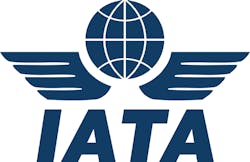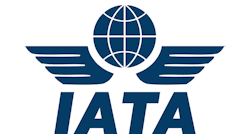The International Air Transport Association outlined its revamped Ground Damage Database initiative to address not only ground damage, but the larger issue of ramp safety, during the association’s Ground Handling Conference in Vancouver last May.
“Airlines have collected data on accidents in many different buckets on their own,” said David Anderson, head of operational safety for British Airways and chairman of the GDDB. “It’s not a question of the quantity of the data, but the quality of the data.”
The GDDB was originally launched in 2011 to provide that quality of data that could be analyzed to determine the reasons and causes for aircraft damage. The launch in 2011, however, was purposefully done with limited membership since IATA spent time that year and in 2012 to make sure the data was reported consistently so that it could be used to better measure the progress made against what is largely costing the aviation industry some $4 billion annually.
“We need to be able to conduct statistical analysis on clean, defensible data,” said Nancy Rockburn, assistant director, SMS and operational data management for IATA and secretary of the GDDB. "Imagine the industry without aircraft damage. That's $4 billion that could be used to buy new planes and made other investments in the industry."
To tackle the issue, key stakeholders from the industry identified ground damage data fields as well as the parameter for how that data should be reported.
“Putting this rigor in place minimizes as much as possible any variation in the data, thereby allowing us to not only provide aggregate information back to participants, but also accurate, detailed analysis to identify trends and contribution factors,” wrote Juergen Haacker, project lead, IATA Operations Data Management, last April in a letter to ground operations members to promote the GDDB.
NEW PROTOCOLS
IATA started its new reporting protocols only since the first quarter of 2012 so the program is still very much in its infancy. For example, here is mandatory information that must be provided for “Incident Details:”
- Location details
- Aircraft details
- Ramp conditions
- Phase of operation
- Activities
- Type of damage
- Damage to aircraft
- Ground equipment
- Severity
Information of “Type of Damage” includes the following:
- Scratch/Dent/Scuff
- Puncture
- Delamination
- Tear or Crack
- Detached
- Slide Deployment
Now that the group has tackled the data quality issue Anderson mentioned, IATA now has to attract more members to buy into reporting the confidential data.
Rockburn said the GDDB currently includes reporting from 23 airlines and three ground service providers. While the locations of these firms are spread across the world, it’s a thin spread since it represents about 4.5 percent of the world’s flights. Only after more members take part can IATA draw any conclusions on the causes of aircraft damage.
And in some cases, some the refinements still haven’t kicked in either. For instance, an example of current GDDB information shared during the conference includes three instances of damage to landing gear caused by pushback vehicles. However, from those three one was with a towbarless vehicle and other are “unknown.” IATA will also soon go to a new Web-based reporting tool with handy drop-down menus that should clear up many of these “unknown” instances with examples of real equipment.
The data itself will go to supply IATA with further ways to reinforce many of its other safety-related programs.
The GDDB information will also feed applicable working groups and task forces, and, if warranted, will then drive changes to the IATA’s Aircraft Handling Manual; Ground Operations Manual; and Safety Audit for Ground Operations programs.


